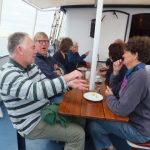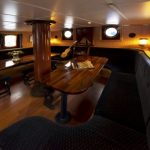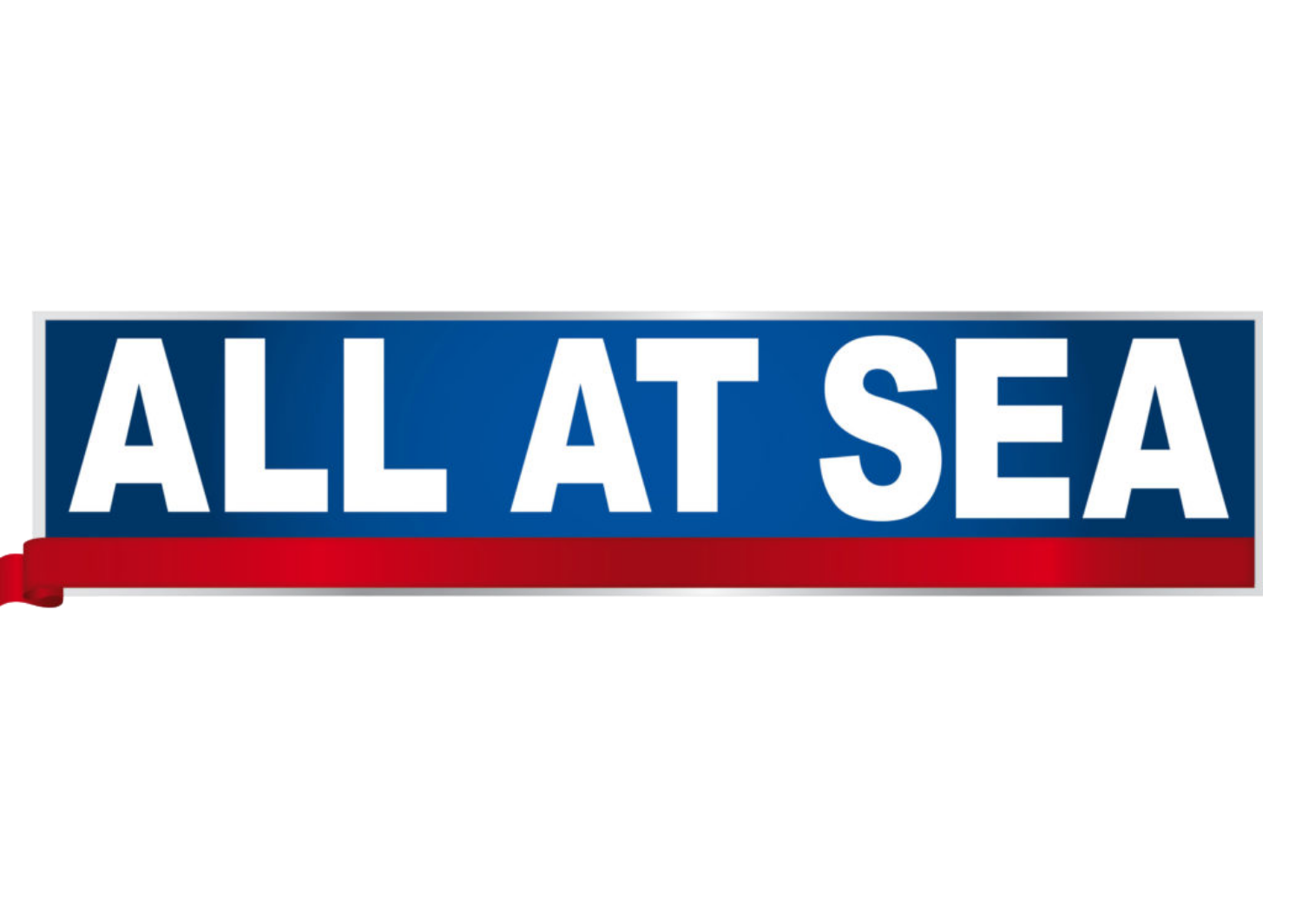Various dates available
Tall Ship: St Kilda & Outer Hebrides Expedition
From £1300 per person
Deposit 50%. Trip balance due 12 weeks before departure
Standard cabin: €1,495 / £1,300 per person*
Standard+ cabin: €1,665 / £1,500 per person*
Single Occupancy: €2,195 / £1,950 per person*
* Trips are priced in the operator’s local currency. The sterling amount shown is a guide only and the amount you pay in sterling will change with currency fluctuations.
Tall Ship: St Kilda & Outer Hebrides Expedition
Duration: 8 Nights from 26 July to 03 August or 03 to 11 August 2024
On the far western border of Scotland, there is a unique group of islands that this tour focuses on: The Outer Hebrides. These islands have a long history of human habitation and are famous for nature, space, tranquillity and seclusion. From the large islands such as Harris and Lewis to the smaller ones like the Monachs, the islands all have their own character and atmosphere. What could be better than discovering these remote islands with a beautiful tall ship?
Witness the ancient Callanish Standing Stones on Harris and Lewis, explore the stunning nature of North Uist, discover the dramatic coastlines of South Uist, and lounge on the white beaches of Barra. Wind and tide lead the way around the Outer Hebrides. If conditions allow, we will set sail to the awe-inspiring St. Kilda islands, home to towering cliffs and rare bird colonies. This trip has no fixed program, but we let ourselves be guided by the elements.

Why You’ll Love This Trip
- Discover the traditions, stories, and legends that make these islands truly special. Delve into the fascinating history of the islands, visit the 6000-year-old Callanish Standing Stones and ancient burial mounds, and experience the Gaelic heritage that still thrives in towns like Lochmaddy.
- Explore the untouched beauty of the Outer Hebrides, from the rugged landscapes of Harris and Lewis to the marshes and lakes of North Uist. Immerse yourself in the tranquillity and seclusion of these remarkable destinations.
- The sea around the Outer Hebrides is home to an enormous diversity of wildlife. From puffins to dolphins, basking sharks and whales. Keep your eyes open!
- If the weather permits, step foot on the legendary St. Kilda archipelago. This remote group of islands has been uninhabited since 1930 and boasts some of Europe's highest cliffs.
- We won't be in a harbour every night. Instead, we will also spend a few nights at anchor between the islands. The undisturbed tranquillity of anchoring in remote places is a unique experience.
Who The Trip Is For
- Nature lovers who are captivated by untouched landscapes, diverse wildlife, and the beauty of the great outdoors. Explore the rugged beauty of the Outer Hebrides and St. Kilda, immersing yourself in nature's wonders.
- History and culture buffs who want to delve into the rich history and cultural heritage of the Outer Hebrides. From ancient stone circles and burial mounds to abandoned villages, each island holds fascinating tales waiting to be discovered by history enthusiasts.
- Those who crave an adventure off the beaten path. This sailing trip offers a unique opportunity to explore remote islands and experience the thrill of being guided by wind and tide.
- Travellers who embrace the flexibility of ocean travel. While we will attempt to reach as many destinations as possible, the final route will be determined during the trip depending on the weather conditions.
Itinerary: Outer Hebrides Expedition
Harris and Lewis
Harris & Lewis is a single island of which the northern part is called Lewis and the southern part Harris, but the border is not clearly drawn. It is the largest island of the Outer Hebrides and although it forms a single island there is a clear difference between the landscape and the atmosphere. Lewis is flatter than Harris which has more mountains and cliffs. The largest town on Harris and Lewis is Stornoway in the North East, a pleasant town with shops, restaurants, and museums. West of Stornoway you will find the “Callanish Standing Stones”, a Neolithic relic used during ritual activities. According to estimates, the stone circle is 6000 years old. The ‘Harris Distillery’ is known for the good Gin they make.
North Uist
North Uist is relatively flat and consists mainly of marshes and lakes which are important habitats for rare bird species. Lochmaddy is the largest town on the island with about 1500 inhabitants, most of whom still speak Gaelic. You can take beautiful walks on the island, the nature here is stunning. Archaeological finds have been made all over the island, such as burial mounds, stone circles, and standing stones.
South Uist
South Uist is much richer in relief than North Uist with hills up to 600 metres. The eastern side of the island consists of hills and dramatic coastlines, the Atlantic side consists almost entirely of beach. Lochboisdale on the east side is the island’s largest town, where the Oban ferry arrives.
Eriskay
Between south Uist and Barra lies the island of Eriskay. The land on the island is unsuitable for agriculture or cattle breeding, the inhabitants mainly lived from fishing for centuries. In 1941, the ship ‘SS Politician’, en route to America, was stranded on the coast of Eriskay with 20,000 barrels of whiskey on board. In 1949, the film “Whisky Galore” based on this story was released.
On Eriskay, “Eriskay Ponies” is an indigenous horse breed.
Barra
Barra is one of the Southernmost islands of the Outer Hebrides and is known for its azure blue sea, white beaches, and beautiful views. Barra has the only commercial airport in the world where planes land and take off from the beach at low tide. There are daily flights from Glasgow to Barra. It is definitely recommended to walk up a hill here to see the view over the island.
St. Kilda
This volcanic archipelago lies off the coast of the Hebrides and consists of the islands of Hirta, Dun, Soay, and Boreray. Here are some of the highest cliffs in Europe, with large colonies of rare and endangered bird species such as puffins and gannets. The archipelago has been uninhabited since 1930.
People have lived on the island of Hirta for thousands of years. The community that Hirta had permanently inhabited for two millennia eventually perished at the hands of fundamentalist pastors and epidemics. In 1930 the last residents were evacuated. On land, you can walk around the abandoned village and experience what life must have been like for the residents. In several houses, an exhibition has been set up about the families that lived in those houses. For more info click here.
Please note: We will attempt to reach as many destinations as possible under sail, however, the specified program is simply a guide. With all tours as exciting as this, flexibility is important as the final route will be determined during the trip depending on the weather conditions.
- All charges regarding port fees, tourist fees, and fuel expenses
- Cabin with shower and toilet
- Bed linen and towels
- The use of a zodiac for landings when we visit places without a harbour
- The crew: captain, cook, and first mate
- Half board including coffee, tea, milk and juice at meals
(In the case of half-board, you will also be able to discover local specialities on land, in addition to the catering on board)
- Transport to and from the vessel
- Personal expenses ashore
- Food ashore
- Fees for events that take place outside the ship
- Beverages besides the included drinks during the meals
Accommodation
This is not a floating hotel but a traditional sailing ship that is comfortable, intimate, and small enough to anchor in shallower water.
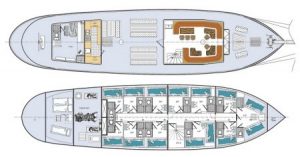
Cabins
- 11 two-person cabins. Total of 22 guests
- All of the cabins on board are twin en-suites with air-conditioning
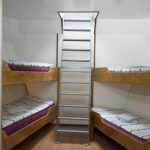
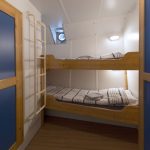
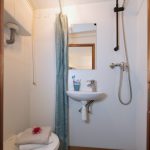
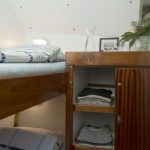
Common areas
- On deck – The ship has a large deck area on which you can sit and soak up the sun. There is a cosy bar in the deckhouse and plenty of room for eating together on the deck.
- Salon – Main interior social space with comfortable couches and tables to sit, eat and socialise with fellow travellers. Includes a bar and entertainment system.
Language
Our voyages attract travellers from all over the world, which has been an important factor in establishing an open-minded atmosphere on board. The crew of the ship is most of the time from Dutch origin but speaks and understands English very well.
Ullapool, Scotland
Ullapool, Scotland
Itinerary: Outer Hebrides Expedition
Harris and Lewis
Harris & Lewis is a single island of which the northern part is called Lewis and the southern part Harris, but the border is not clearly drawn. It is the largest island of the Outer Hebrides and although it forms a single island there is a clear difference between the landscape and the atmosphere. Lewis is flatter than Harris which has more mountains and cliffs. The largest town on Harris and Lewis is Stornoway in the North East, a pleasant town with shops, restaurants, and museums. West of Stornoway you will find the “Callanish Standing Stones”, a Neolithic relic used during ritual activities. According to estimates, the stone circle is 6000 years old. The ‘Harris Distillery’ is known for the good Gin they make.
North Uist
North Uist is relatively flat and consists mainly of marshes and lakes which are important habitats for rare bird species. Lochmaddy is the largest town on the island with about 1500 inhabitants, most of whom still speak Gaelic. You can take beautiful walks on the island, the nature here is stunning. Archaeological finds have been made all over the island, such as burial mounds, stone circles, and standing stones.
South Uist
South Uist is much richer in relief than North Uist with hills up to 600 metres. The eastern side of the island consists of hills and dramatic coastlines, the Atlantic side consists almost entirely of beach. Lochboisdale on the east side is the island’s largest town, where the Oban ferry arrives.
Eriskay
Between south Uist and Barra lies the island of Eriskay. The land on the island is unsuitable for agriculture or cattle breeding, the inhabitants mainly lived from fishing for centuries. In 1941, the ship ‘SS Politician’, en route to America, was stranded on the coast of Eriskay with 20,000 barrels of whiskey on board. In 1949, the film “Whisky Galore” based on this story was released.
On Eriskay, “Eriskay Ponies” is an indigenous horse breed.
Barra
Barra is one of the Southernmost islands of the Outer Hebrides and is known for its azure blue sea, white beaches, and beautiful views. Barra has the only commercial airport in the world where planes land and take off from the beach at low tide. There are daily flights from Glasgow to Barra. It is definitely recommended to walk up a hill here to see the view over the island.
St. Kilda
This volcanic archipelago lies off the coast of the Hebrides and consists of the islands of Hirta, Dun, Soay, and Boreray. Here are some of the highest cliffs in Europe, with large colonies of rare and endangered bird species such as puffins and gannets. The archipelago has been uninhabited since 1930.
People have lived on the island of Hirta for thousands of years. The community that Hirta had permanently inhabited for two millennia eventually perished at the hands of fundamentalist pastors and epidemics. In 1930 the last residents were evacuated. On land, you can walk around the abandoned village and experience what life must have been like for the residents. In several houses, an exhibition has been set up about the families that lived in those houses. For more info click here.
Please note: We will attempt to reach as many destinations as possible under sail, however, the specified program is simply a guide. With all tours as exciting as this, flexibility is important as the final route will be determined during the trip depending on the weather conditions.
Warm and waterproof clothing is very important, as it can get very cold during sailing, especially at night, even in the summer. A waterproof and windproof jacket is recommended to help keep warm and dry. Waterproof rubber-soled boots or shoes are also recommended to keep your feet dry and warm. Pack comfortable and practical clothing for all weather circumstances, the key is layers. It is recommended to pack in a soft bag that can be easily stored away as there is no locker room onboard for suitcases. Also in the cabins, there are 2-pin European plug sockets and USB sockets (‘normal’ USB-B, no USB-C on board) so guests will need to bring adapters if they are from outside the EU.
- List of items we recommend you bring with you; these are not mandatory.
- Warm hat and gloves
- Adaptor for European Socket
- Wet weather clothing – waterproof and windproof jacket
- Clothing – enough clothing for all weather circumstances (think layers and quick dry clothes)
- Wellies or waterproof shoes
- Walking boots, shoes for onshore, and trainers with good grip
- Sea Sickness and personal medication
- Small Torch (head torches are good)
- Camera
- Sunglasses (polarised lenses are ideal, but not essential)
- Sunscreen (water-resistant, SPF 30 or higher)

